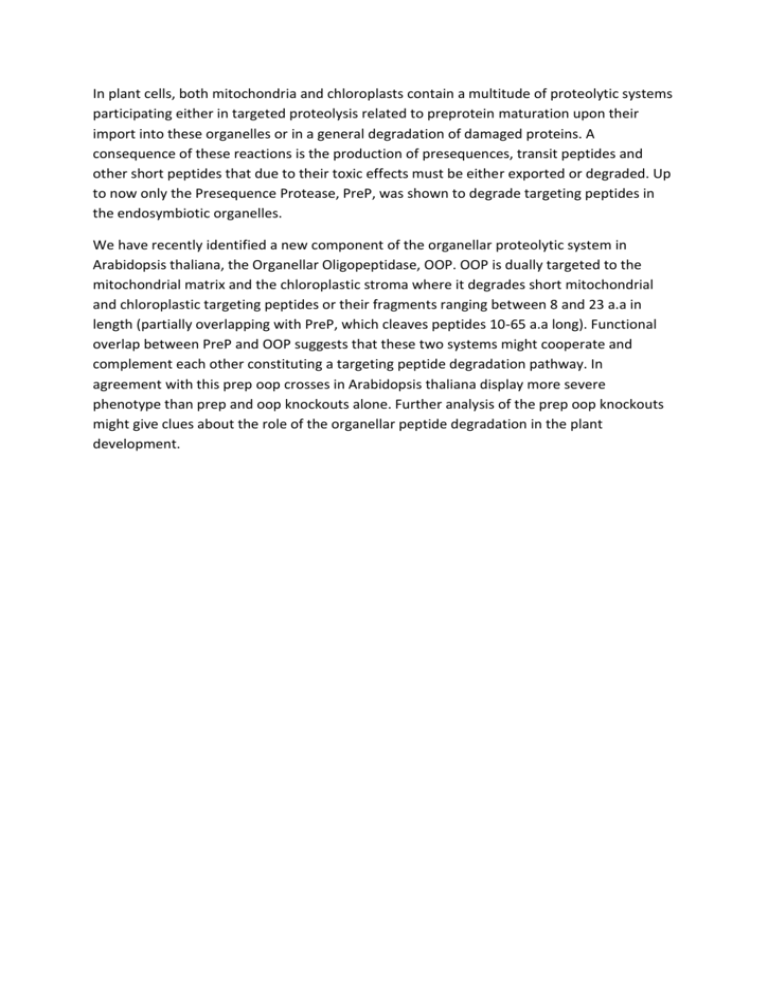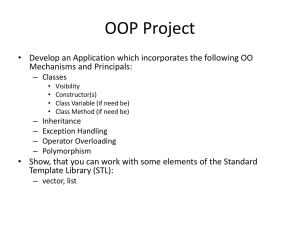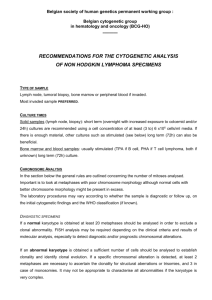In plant cells, both mitochondria and chloroplasts contain a multitude
advertisement

In plant cells, both mitochondria and chloroplasts contain a multitude of proteolytic systems participating either in targeted proteolysis related to preprotein maturation upon their import into these organelles or in a general degradation of damaged proteins. A consequence of these reactions is the production of presequences, transit peptides and other short peptides that due to their toxic effects must be either exported or degraded. Up to now only the Presequence Protease, PreP, was shown to degrade targeting peptides in the endosymbiotic organelles. We have recently identified a new component of the organellar proteolytic system in Arabidopsis thaliana, the Organellar Oligopeptidase, OOP. OOP is dually targeted to the mitochondrial matrix and the chloroplastic stroma where it degrades short mitochondrial and chloroplastic targeting peptides or their fragments ranging between 8 and 23 a.a in length (partially overlapping with PreP, which cleaves peptides 10-65 a.a long). Functional overlap between PreP and OOP suggests that these two systems might cooperate and complement each other constituting a targeting peptide degradation pathway. In agreement with this prep oop crosses in Arabidopsis thaliana display more severe phenotype than prep and oop knockouts alone. Further analysis of the prep oop knockouts might give clues about the role of the organellar peptide degradation in the plant development.











